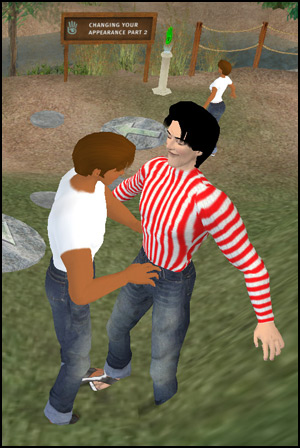 Welcome
Welcome
to your Second Life, your new virtual world awaits you! The hope of a new life,
free from all the real people you know and the sorry state of your own appearance.
You can look like you’ve always wanted to look! Plus, no smells!
Oh, but wait. First this guy wants to put his hand in your pants.
And this is just what happened to a student of mine as he entered Second
Life for the first time. Second Life is an online world that allows you
to own virtual land and engage in various business and interpersonal activities:
flirting, gambling, building things, groping, etc.
While I’m not opposed to groping in an of itself, and I’m certainly not against
online worlds, this quite common event shows just how far these worlds still
need to go.
In the near future most people will have multiple avatars in multiple, interconnected
worlds engaged in all manner of activities - not just games and diversions.
And just as the pornography industry blazed many an Internet trail, so too
will they work out the kinks (so to speak) in online worlds. In Second Life
you can go to stripper bars and watch naked pixel women writhe before you in
all their herky jerky, motion captured glory. If you give them Second Life currency,
they will do other things for you.
One of the big problems with these worlds at the present time is that they
are all privately owned, commercial ventures. Yes this will move the technology
and the ecology of virtual culture forward, but certain areas will be ignored,
such as shared spaces. The immersive digital commons.
For this we need an open-source movement in virtual worlds. One they are available,
people will want virtual “rooms” and they will want to interconnect
them, just the way they interconnect now with flickr
and facebook, and all the
other social
software tools. People will connect their spaces organically, like the blogosphere,
free from any overarching dictator - which is exactly how online worlds are
governed now.
Once we have real public space in online worlds then we’ll have an online world
worth entering.
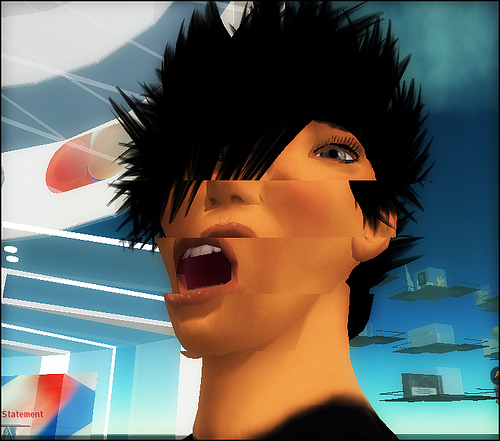
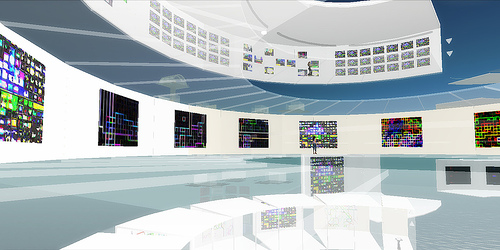
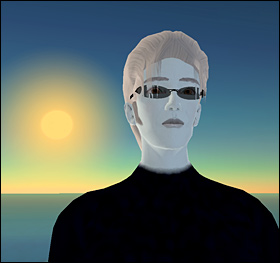 I’ve
I’ve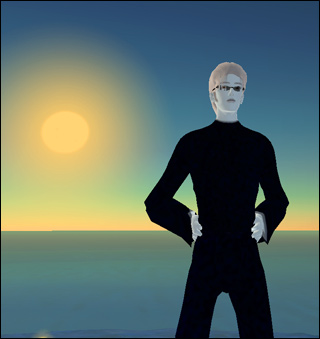 The other area of interest is religion, and many of the comments above apply
The other area of interest is religion, and many of the comments above apply
 Welcome
Welcome